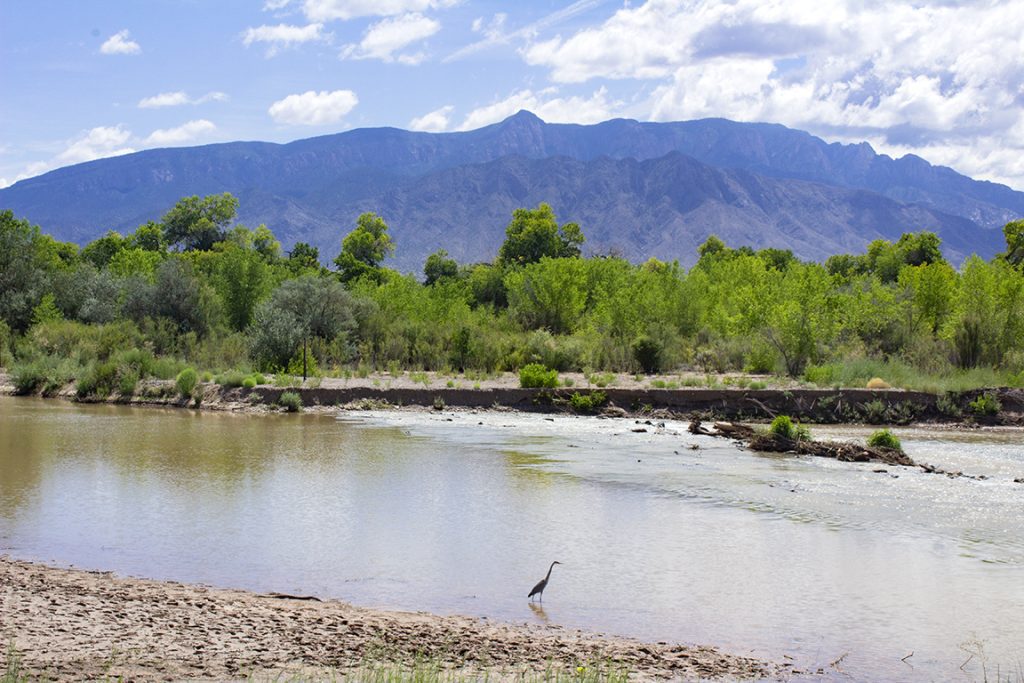Current work in wildlife, rivers, public lands, and climate
Press Releases
Communities expecting another challenging year in the Rio Grande Basin
“This river connects us all. We’re staring down another hard water year, where the effects of reduced streamflow are just compounding. From farmers, both here in the Valley and south of Elephant Butte, to the tiny silvery minnow and all the species that rely on this river, to the needs of cities. We’re all dependent on the Rio Grande,” said Tricia Snyder, Rio Grande Campaigner for WildEarth Guardians.
While the forecast is dim, archaic laws and policies that dictate water management in the Basin–including the Rio Grande Compact–will have equally serious impacts on when and where water is available this summer. The Compact is an agreement between the states of Colorado, New Mexico and Texas that spells out how much water needs to be delivered to the downstream state each year. As of January 2022, New Mexico owes Texas about 130,000 acre-feet of water in 2022. That amount cannot exceed 200,000 acre-feet without violating the Compact and triggering even further restrictions on water use and storage by New Mexicans. This means more pressure on water managers to get water to Elephant Butte Reservoir (the delivery point for New Mexico) to ensure maintained compliance.
Historically, this has meant re-routing Rio Grande water through canals, drains, and other artificial channels, bypassing important river ecosystems, habitat for imperiled species, and degrading the quality-of-life living rivers bring to communities. The Low Flow Conveyance Channel (LFCC), built in the 1950s when water managers’ preeminent concern was getting water where it was needed for irrigated agriculture as quickly as possible, is the largest piece of such infrastructure. During its operation until the mid-1970s profound impacts on ecosystems occurred, including significant drying of the Rio Grande which resulted in adverse effects on recreation and habitat destruction.
“We have to start thinking about and managing river systems more holistically, ensuring that all water uses are not only considered but have a seat at the decision-making table,” added Snyder. “Our water challenges are only going to get more complicated as the impacts of climate change intensify and we don’t have any more time to waste.”
Last year, the Middle Rio Grande Conservancy District (District) delayed the start of its irrigation season by one month, from March 1 to April 1 to help offset some of the strain on the river. This year, the District plans to implement a staggered delivery plan, beginning in late March. At the beginning of the year, the District approved an operational plan that will allow no more than half of native Rio Grande streamflow to be diverted for irrigation purposes, so long as the river remains connected through the Albuquerque area and Compact deliveries can still be made. Once the river becomes disconnected, the District has committed to working with water managers to minimize damage to endangered species. It’s unclear what that will entail, particularly if New Mexico’s Compact debit tops 200,000 acre-feet.
In addition to New Mexico’s looming Compact debit, the state is also currently involved in settlement discussions with the states of Texas and Colorado, as well as relevant cities and irrigation districts, related to Compact obligations. The outcome of the lawsuit could have significant implications for future water management in the region, particularly under drought conditions.
“Without heroic measures to ensure the health of the Rio Grande, we’re looking at another year of damage to a Living Rio and the quality-of-life it provides,” said Jen Pelz, Wild Rivers Program Director for WildEarth Guardians. “We’ve put off the hard conversations for too long and if we don’t act now, we are risking permanent damage to the river, as well as to the communities that depend on it.”

The Rio Grande provides habitat for a plethora of native species, including endangered species like the Rio Grande silvery minnow, Southwestern willow flycatcher, and yellow-billed cuckoo. Photo by Javier Gallegos.